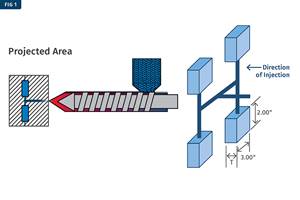Sun Power, Technology Focus: Listen to the Echo
If you’re walking around your plant one day and hear an echo, you might want to listen closely.
If you’re walking around your plant one day and hear an echo, you might want to listen closely. It might not be the usual hum of your purring injection presses popping out parts; instead it might be a little voice giving you tips on how to be a better molder and recoup business once lost to the Chinese.
Best listen to that voice. Echo Molding Inc. (echomolding.com) started as a family-owned toolmaker in 1975 that was nudged into injection molding at the request of its customers. Now, it operates a 65,000 ft² facility in Union, N.J., where state-of-the-art machine and processing technology, an emphasis on automation, and a newly implemented project to slash energy expenses combined to help Echo charge up its business during what’s been dubbed The Great Recession.
Echo runs about 4 million lb a year of a wide range of materials but focuses primarily on PS, ABS, PP, and PC. The firm custom molds point-of purchase displays and food-service platters and utensils on 22 injection presses from Nissei America, Anaheim, Calif. (nisseiamerica.com). Every press is equipped with a robot from either Star Automation, Milwaukee (starautomation.com), or Wittmann Battenfeld, Torrington, Conn. (wittmann-ct.com). Echo employs 45 people. A single operator typically covers up to three presses at a time.
Echo’s injection machines, which range from 90 to 950 tons, “are workhorses and easy to operate,” says Gerhard Schlotterbeck, who co-founded the company with Dieter Hekler. Schlotterbeck says Echo buys a new machine about every year; its newest is an energy-efficient Nissei Ecoject FNX hybrid with servo pump drive.
The Ecoject purchase demonstrates Echo’s commitment to lowering its energy expenses in an effort to become more competitive with rival molders from low-cost countries. But perhaps a more dramatic demonstration of its green commitment came about a year ago, when the molder spent $1.6 million to convert its plant to solar energy. It teamed up with GeoGenix, Rumson, N.J. (geogenix.com), to become one of the first plastics processors in the state to go solar. The project began in December 2008 and concluded three months later. Echo installed a 231-kW system with 1320 solar panels that measure 32 × 62 in. and can put out 175W each. The installation required no roof penetration—the entire system is self-ballasted.
In the first year, roughly 20% of Echo’s power usage was derived from the sun, “but not a day goes by—not even a cloudy, rainy day—where we don’t produce at least some energy from the system,” reports Armin Schlotterbeck, son of one of the founders and part of a second-generation team that includes Robert Hekler.
Right off the bat, Echo was able to cut its annual energy bill by $38,000, which allowed it to become more competitive with the Chinese. “In our foodservice business, we used to get just the overflow, what the Chinese molders couldn’t handle, mainly because our cost structure was 17% higher than theirs” explains Robert Hekler. “Partly as a result of our decision to go solar, we’ve been able to lower our costs and more than triple that volume.”
Echo refinanced its plant to pay for the installation, and received a reduction of 0.5% from PNC Bank because the project was considered “green.” It also received rebates from both the state and federal governments totaling roughly $600,000. Under New Jersey law, the switch to solar power has also provided Echo with a new revenue stream: For every 1000 kWh Echo’s system generates, it receives from the state a Solar Renewable Energy Credit (SREC), which is a tradeable commodity. In the first year, Echo generated $150,000 by selling its SRECs. Echo is looking at a payback time of less than seven years on a system that is expected to have a life cycle of 30 years.
Echo has found that its earth-friendly position has had a direct sales impact as well. Says Gerhard Schlotterbeck.: “When we talk about our solar program, that has helped us gain business.”
Related Content
How to Reduce Sinks in Injection Molding
Modifications to the common core pin can be a simple solution, but don’t expect all resins to behave the same. Gas assist is also worth a try.
Read MoreThree Key Decisions for an Optimal Ejection System
When determining the best ejection option for a tool, molders must consider the ejector’s surface area, location and style.
Read MoreA Systematic Approach to Process Development
The path to a no-baby-sitting injection molding process is paved with data and can be found by following certain steps.
Read MoreIs There a More Accurate Means to Calculate Tonnage?
Molders have long used the projected area of the parts and runner to guesstimate how much tonnage is required to mold a part without flash, but there’s a more precise methodology.
Read MoreRead Next
For PLASTICS' CEO Seaholm, NPE to Shine Light on Sustainability Successes
With advocacy, communication and sustainability as three main pillars, Seaholm leads a trade association to NPE that ‘is more active today than we have ever been.’
Read MorePeople 4.0 – How to Get Buy-In from Your Staff for Industry 4.0 Systems
Implementing a production monitoring system as the foundation of a ‘smart factory’ is about integrating people with new technology as much as it is about integrating machines and computers. Here are tips from a company that has gone through the process.
Read More





















